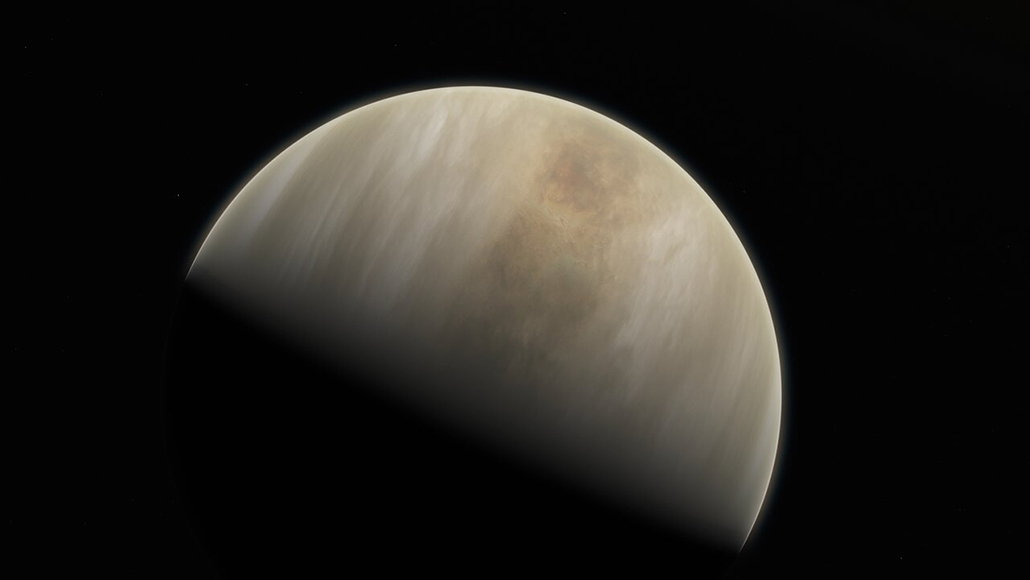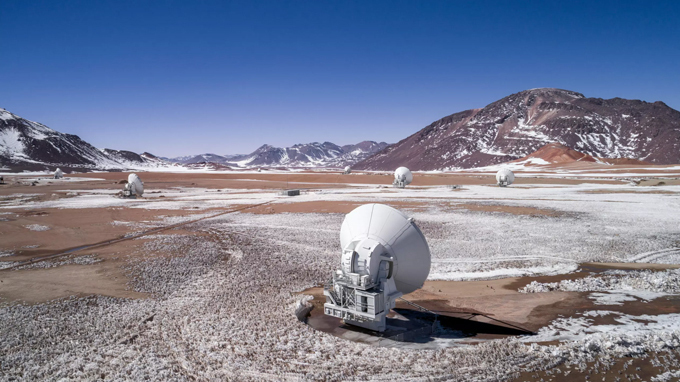Doubts over a ‘possible sign of life’ on Venus show how science works
Further searches for reported hints of phosphine have been turning up empty

Earth’s neighbor planet Venus, shown here in an artist’s impression, is under the microscope after a contested report of phosphine in its clouds.
M. Kornmesser/ESO, Caltech/JPL/NASA
- More than 2 years ago
It was one of those “big, if true” stories. In September, scientists reported that Venus’ atmosphere seems to be laced with phosphine, a possible sign of life.
Now there’s increasing emphasis on the “if.” As scientists take fresh looks at the data behind the Venus announcement, and add other datasets to the mix, the original claim of inexplicable amounts of phosphine is being called into doubt. And that’s a good thing, many scientists say.
“It’s exactly how science should work,” says planetary scientist Paul Byrne of North Carolina State University in Raleigh, who studies Venus but was not involved in any of the phosphine papers. “It’s too early to say one way or the other what this detection means for Venus.”
Here’s a closer look at efforts to get from “if” to “true:”
The big claim
On September 14, astronomer Jane Greaves of Cardiff University in Wales and colleagues reported that they had seen signs of phosphine in Venus’ clouds using two different telescopes (SN: 9/14/20). The phosphine seemed to be too abundant to exist without some kind of source replenishing it. That source could be strange microbes living in the clouds, or some weird unknown Venusian chemistry, the team said.
Greaves and colleagues first spotted phosphine with the James Clerk Maxwell Telescope in Hawaii and followed up with the powerful ALMA telescope array in Chile. But those ALMA data, and particularly the way they were handled, are now being called into question.

Reading the data: Real molecules or random wiggles?
The key Venus observations were spectra, or plots of the light coming from the planet in a range of wavelengths. Different molecules block or absorb light at specific wavelengths, so searching for dips in a spectrum can reveal the chemicals in a planet’s atmosphere.
Phosphine showed up as a dip in Venus’ spectrum at about 1.12 millimeters, a wavelength of light that the molecule was thought to be absorbing. If Venus’ spectrum could be drawn as a straight line across all wavelengths of light, phosphine would make a deep valley at that wavelength.
But real data are never that easy to read. In real life, other sources — from Earth’s atmosphere to the inner workings of the telescope itself — introduce wiggles, or “noise,” into that nice straight line. The bigger the wiggles, the less scientists believe that the dips represent interesting molecules. Any particular dip might instead be just a random, extra-large wiggle.
That problem gets even worse when looking at a bright object such as Venus with a powerful telescope like ALMA, says Martin Cordiner, an astrochemist at NASA’s Goddard Space Flight Center in Greenbelt, Md. Cordiner uses ALMA to observe other objects in the solar system, like Saturn’s moon Titan, but was not involved in the Venus work.
“The reason those bumps and wiggles are here at all is because of the intrinsic brightness of Venus, which makes it difficult to get a reliable measurement,” Cordiner says. “You could think of it as being dazzled by a bright light: If there’s a bright light in your vision, then your ability to pick out fainter details becomes diminished.”
So astronomers do a few different things to smooth out the data and let real signals shine through. One strategy is to write an equation that describes the wiggles caused by the noise. Scientists can then subtract that equation from the data to highlight the signal they’re interested in, like fuzzing out the background of a photo to let a portrait subject pop. That’s a standard practice, says Cordiner.
But it’s possible to write an equation that fits the noise too well. The simplest equation one could use is just a straight line, also known as a first-order polynomial, described by the equation y=mx+b. A second-order polynomial adds a term with x squared, third-order with x cubed, and so on.
Greaves and colleagues used a twelfth-order polynomial, or an equation with twelve terms (plus a constant, the +b in the equation), to describe the noise in their ALMA data.
“That was a red flag that this needed to be looked at in more detail, and that the results of that polynomial fitting could be untrustworthy,” says Cordiner. Going all the way out to the power of 12 could mean a researcher subtracts more noise than is truly random, allowing them to find things in the data that aren’t really there.
To see if the researchers were a little overzealous in their polynomial fitting, astrophysicist Ignas Snellen, of Leiden University in the Netherlands, and colleagues reapplied the same noise reduction recipe to the ALMA data on Venus and found no statistically significant sign of phosphine, they report in a paper posted at arXiv.org on October 19.
Then the researchers tried the same noise filtering on other parts of Venus’ spectrum, where no interesting molecules should be found. They found five different signals of molecules that aren’t really there.
“Our analysis … shows that at least a handful of spurious features can be obtained with their method, and therefore [we] conclude that the presented analysis does not provide a solid basis to infer the presence of [phosphine] in the Venus atmosphere,” the team wrote.
Sign up for our newsletter
We summarize the week's scientific breakthroughs every Thursday.
Looking for other data — and getting no help yet
Meanwhile, scientists at ALMA discovered a separate, unspecified issue in the data that were used to detect the phosphine and took those data off the observatory’s public archive to scrutinize and reprocess, according to a statement from the European Southern Observatory, of which ALMA is a part.
“This does not happen very often,” says Martin Zwaan of the ESO ALMA Regional Center in Garching, Germany, but this isn’t a first. When issues are discovered, it is standard practice to reprocess the data. “In many cases, it does not affect the science outcome significantly,” Zwaan says. “In the case of the phosphine on Venus, this [outcome] has not been established yet.”
What can scientists do while they wait? One of the best ways to confirm the phosphine is to see an equivalent signal at a different wavelength in Venus’ spectrum. Unfortunately, the news isn’t great there either. In a paper to appear in Astronomy & Astrophysics, astronomer Thérèse Encrenaz of the Paris Observatory and colleagues (including Greaves and some other authors of the original paper) looked at archived data from an infrared spectrograph called TEXES that operates in Hawaii. Those observations could have spotted phosphine in Venus’ cloud tops, a lower part of the sky than what ALMA could see.
Greaves and colleagues had approached Encrenaz to look for phosphine in infrared wavelengths before the original paper came out, but those observations were cancelled by the COVID-19 pandemic. So Encrenaz looked through data she had collected between 2012 and 2015 — and found nothing.
“At the level of the cloud tops, there is no [phosphine] at all,” Encrenaz says. That doesn’t necessarily mean there’s no phosphine higher up in the sky — there’s just no clear explanation for how it would get there. “The reasoning in the paper by Jane Greaves was that phosphine was coming from the clouds,” Encrenaz says. “So there is a big problem.”
‘This is just what science looks like.’
There are still ways for Venus’ phosphine to pull through. If it varies with time, for instance, it might be there some of the times that astronomers look and not at others. It’s too early to invoke that scenario, though, Cordiner says. “There’s no point of talking about the time variability of a signal if it isn’t there.”
But this is not a crisis, says Clara Sousa-Silva, an astrochemist at the Harvard-Smithsonian Center for Astrophysics in Cambridge, Mass., and a coauthor of the original paper. Other groups challenging the finding “is completely normal and what I expected (nay, hoped) would happen,” she wrote in an e-mail. “This is usually a phase of a project that I enjoy, and I am hoping people will realize this is just what science looks like.”
The silver lining in all of this is that it’s gotten people excited about Venus, says Byrne, who is a member of NASA’s Venus Exploration Analysis Group.
“These papers provide much value and a needed assessment of these extraordinary claims,” he says. “If nothing else, it has shone a light on just how little we understand about Venus. And the only way we get those answers is if we go to Venus.”







